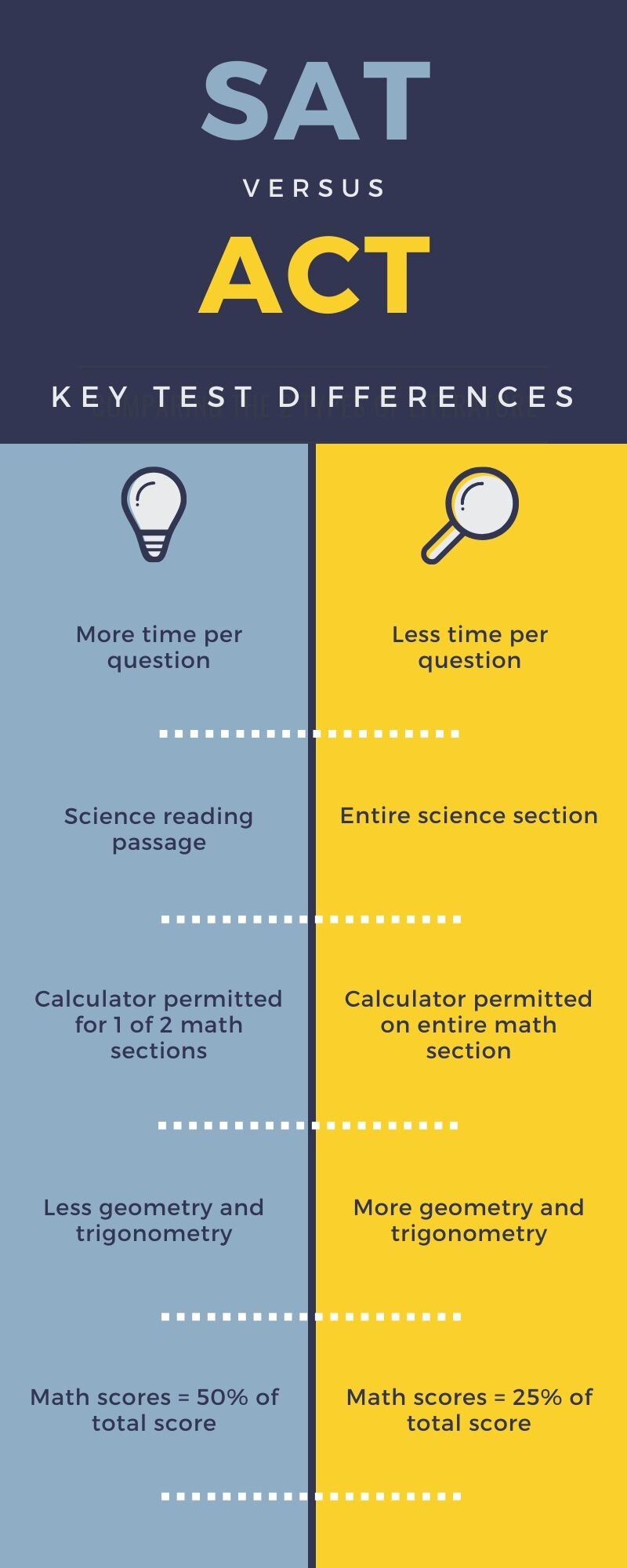SAT or ACT? How to Decide Which Test to Take
/When it comes to college planning, many students and parents find themselves wondering if there’s a clear advantage in taking either the SAT or ACT. My usual advice is that the choice of test is less important than how much effort students put into mastering it. With that being said, there are some differences between the SAT and ACT that, for some students, may make one test preferable to the other.
There’s Only Way to Know for Sure: Take Both SAT and ACT Practice Tests.
The College Board and ACT conducted a concordance study for SAT-ACT scores and published a 2018 conversion chart, which can be used to determine what a given score will translate to from one test to the other. If students take both an SAT and ACT practice test, they can use the conversion chart to see whether their scores are basically equivalent or higher on one test. If they did do better on one of the tests, they can plan to take that one.
Note: the tests have changed since 2018, so this chart may not be very accurate anymore.
Key Test Differences
The SAT and ACT cover largely the same material in a pretty similar manner. However, there are some differences that may provide an advantage to some students.
The ACT has an entire science section (optional on the digital version) while the SAT contains science passages on the reading section. Neither the SAT nor ACT test your science content knowledge, but rather your ability to interpret scientific information that is given.
The pacing (time per question) on the ACT is faster than on the SAT. Students have to answer more questions in a shorter time on the ACT.
The SAT reading section gives questions in chronological order with the passage, while the ACT reading section does not.
SAT reading questions focus heavily on identifying evidence in the passage that supports a claim. Questions of this type don’t appear on the ACT reading section.
The SAT essay (50 minutes) asks you to read an essay and evaluate the structure, arguments, and evidence relied on by the author. The ACT essay (40 minutes) asks you to analyze different points of view on an issue, state your position, and support it with evidence. Both essays are optional but recommended.
The ACT math section tests some topics, such as trigonometry, more frequently and in-depth than the SAT math section does. However, some students find SAT math questions to be worded in a trickier way than ACT math questions, which tend to be a bit more straightforward.
The SAT has one math section that prohibits the use of calculators. The ACT allows calculators for the entire math section.
The ACT math section covers more geometry than the SAT math sections.
The SAT math sections provide a reference guide with some formulas, while the ACT math section does not.
Math scores on the SAT are half of your overall score, while on the ACT they make up 25% of your overall score.
ACT math questions have 5 answer choices, while SAT math questions have 4. This means your chances of guessing the correct answer are higher for SAT math questions (25%) than ACT math questions (20%).
The SAT has some math questions that are fill-in-the-blank, while the ACT math section is all multiple choice.
Reasons to Take One Test Over the Other
With test differences in mind, you can assess how your strengths and weaknesses line up with what you now know about the SAT and ACT.
You May Prefer the SAT if:
You fear or strongly dislike science
You tend to need more time to answer questions on tests
You don’t feel as comfortable with advanced math topics
You feel comfortable with math word problems and data analysis
You May Prefer the ACT if:
You love science and feel that interpreting scientific data, charts, and graphs is one of your strengths
You have no problem working through problems quickly on tests
You’re strong in math, especially geometry
Note for International Students
The ACT is now given internationally as a computer-based test only. Students who live outside of the U.S. (including U.S. Territories) or Canada should take this into account, as many students benefit from being able to underline, circle, and take notes on the test booklet.


